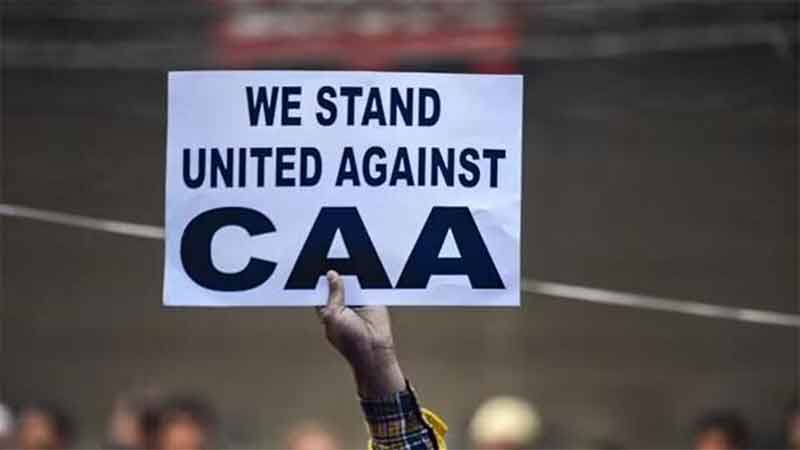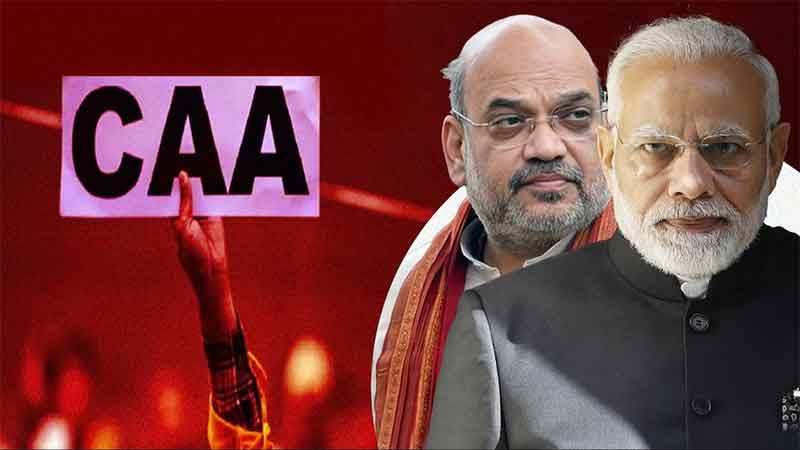
Amid ongoing protests against CAA-NRC-NPR across the country, some protesters are also claiming this nation-wide resistance to be one community’s affair. Their arguments come from their pungent criticism to one politician’s statement saying the battle is for India’s soul. Although, not just one but a number of them from different political outfits are impelling the same idea to cover their political motives. But claimants believe that the attack is on Muslims and they have come out on streets to fight their battle. I think we should revisit their arguments and understand the issue from a different perspective. First, we need to see what discourse people or protesters set around the movement instead of how any politician wants us to see or believe. In this case, if we observe the nature of the protests, we find religious heterogeneity among those protesting in New Delhi, Hyderabad, Uttar Pradesh, West Bengal, Bihar and everywhere in India, against CAA-NRC-NPR and government’s efforts to infringe the movement by thrashing students. Their collective actions reflect that this battle is for India’s secular character and constitution. Second, since we have already agreed to the failure of the opposition parties and accepted people as the strongest opposition to the government, why, in all our senses, are we even rendering our attention to them and ignoring large number of dissidents?
It seems convenient and effortless to argue how only Muslims are raising their voices and their struggle to reclaim their identity makes it ‘a Muslim affair’. Arguments supporting this stand are also considerable to substantiate the hostility towards Muslims, but nonetheless, they are adequate to undermine the inclusivity of the nation-wide protests. Given that the ruling government has been discriminatory against Muslims since its ascension, and also drafted prejudiced policies to marginalise them, CAA-NRC-NPR are among such policies, thus Muslims have come out of their homes to fight for their membership in Indian society. But wait a while. When Muslims have been a part of India’s syncretic culture for more than a millennium, and abiding by the constitution since independence, does this submission not make them an integral part of the country? And isn’t any attack on a Muslim or the whole community not an implicit attack on the country itself and the basic structure of its constitution? Historically, India has a core culture, and that core culture is infused with Muslim content and has shaped Muslim consciousness in India, as Muqtedar Khan, author and Senior Fellow at the Centre for Global Policy, writes. He adds, ‘Much like Islamists who have tried to create Islamic states in nations like Pakistan, Afghanistan, and Iran, Hindu nationalists too are trying to create a Hindu state in India. But their strategy of disintegrating Muslims is also dismantling the secular and democratic basis of India. A Hindu-Rashtra may or may not emerge in the future but in the present Hindu nationalists are taking a wrecking ball to everything that made India a pluralist, diverse and vibrant civilisation.’ Other activists and scholars too look at it the same way. Eminent historian Irfan Habib says that this terrible law would affect poorer sections of the society, no matter what religion or community they belong to. Activist Sadaf Jafar, who was detained and tortured by the UP police, believes this act is against the idea of Indianness. But most importantly, look at the protesters across the nation, their slogans, posters, dedication to make their protest democratic, they too believe that CAA-NRC-NPR are meant to not only marginalise and oppress Muslims, but blemish India’s secular character and composite culture. Thus, their collective endeavour makes it a pro-democracy, pro-constitution and common people vs state affair. It is not about permutations and combinations of political parties, but integration of people having varied religious background and sharing one common identity ‘Indian’.
The protest against the unconstitutional bill began at Aligarh Muslim University on the day it was scheduled to be tabled in the Rajya Sabha, and then reached Jamia Millia Islamia, where during the protest, students were brutally beaten by the Delhi police on December 15th, 2019. In the evening, UP police turned even more brutal to AMU students protesting in solidarity with the students of JMI, and then the movement stirred up. Everyone who looks at the movement as only a Muslim affair, wields accounts of Muslims killed, detained, and booked under severe charges by the police in different parts of the country especially Uttar Pradesh where police targeted, killed, detained, and tortured a number of Muslims across the state. It is all absolutely true and horrifying but I think we are missing something worth the view. JNU students were also beaten by the masked goons with equal ruthlessness while they were protesting against fee hike and Delhi police watched as accessory. Among those detained from JMI and other protests in New Delhi, there were a number of non-Muslim students and activists. Students of BHU were also detained while protesting against the same and there is an endless list of such examples from across the country. let’s not forget S.R. Darapuri, Akhil Gogoi, Chandrashekhar Azad and others who fearlessly participated in the fight against the fascist government. Also, protesters killed and tormented in Assam should not be disregarded for the purpose of making it an issue of just one community. Contributions of Sikh brothers too at Shaheen Bagh and other protest sites can’t banish from our thought easily.
If we consider the fact that this is a struggle between the oppressor and the oppressed, then we must look at who all have been oppressed and exploited in the last five years, Muslims, Dalits, Aduvasis, farmers, students, women and everyone who got up against the establishment. This is primarily a fight against CAA-NRC-NPR which target Muslims explicitly but at the same time, this fight is against the fascist regime that has vandalised India socially, economically and politically. If we believe that the ruling government follows a 50-year old roadmap, we must note that this roadmap recognizes other communities too as threats, so, Muslims are being used as a bridge to tyrannize others, and this overt attack makes it a by-product of Islamophobia. We are well aware that Islamophobia is a global phenomenon which cannot be challenged just by colouring one nation-wide common people’s movement. We need organised efforts, critical thinking and educational reforms to fight this phenomenon.
Shafey Anwarul Haque is a Research Scholar at Aligarh Muslim University. He has earlier worked as a freelance journalist Email id: [email protected]
SIGN UP FOR COUNTERCURRENTS DAILY NEWS LETTER















































